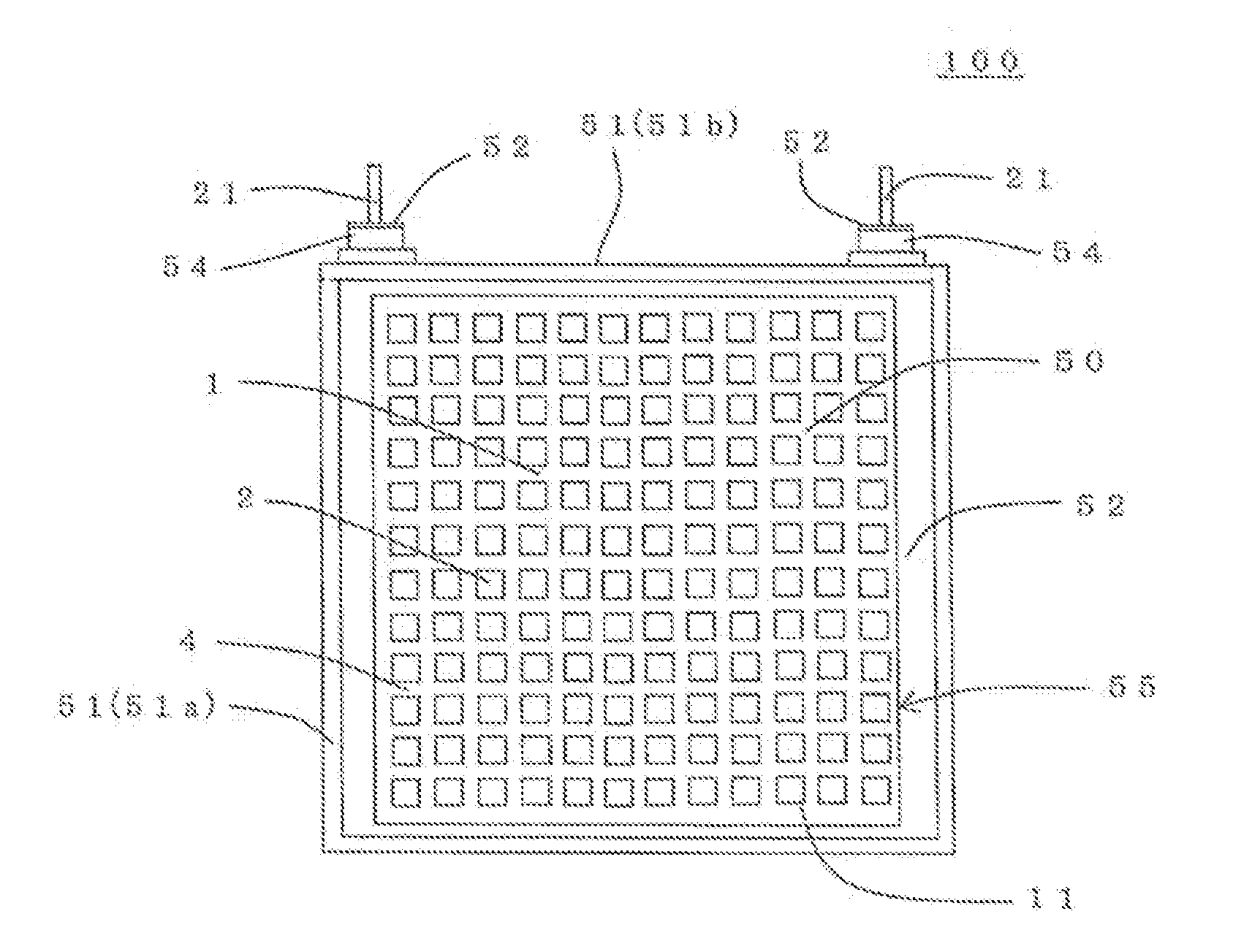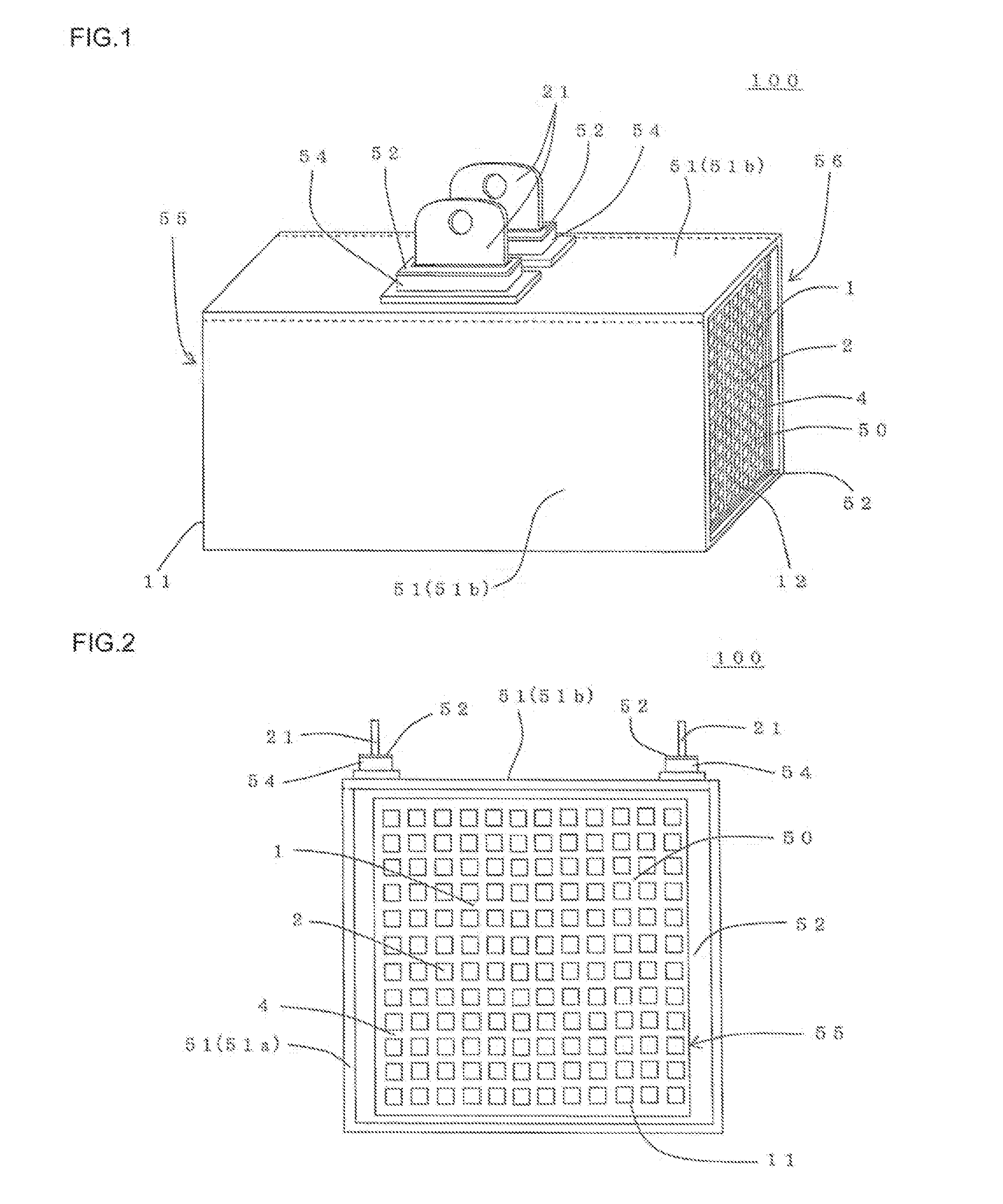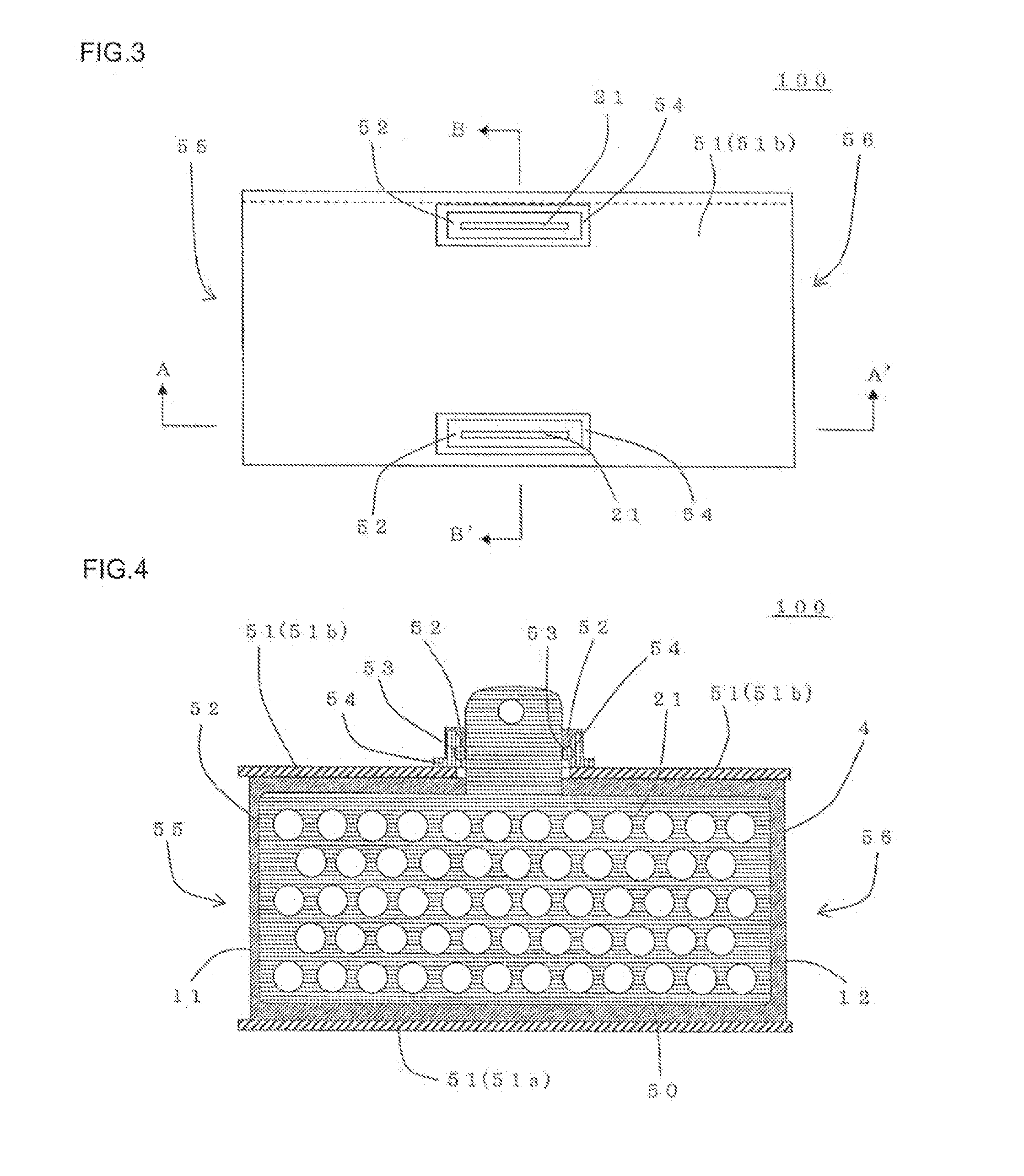Heater
- Summary
- Abstract
- Description
- Claims
- Application Information
AI Technical Summary
Benefits of technology
Problems solved by technology
Method used
Image
Examples
example 1
[0218]In the first place, a honeycomb structural portion containing Si composite SiC as the main component was manufactured. Specifically, a SiC powder, a metal Si powder, water, and organic binder were mixed together and kneaded to prepare a kneaded material. Next, the kneaded material was formed into a honeycomb shape to obtain a honeycomb formed body. Then, by firing the honeycomb formed body in an inert gas atmosphere, a honeycomb structural portion containing Si composite SiC as the main component was manufactured. The Si composite SiC honeycomb body had a porosity of 40%.
[0219]The shape of the honeycomb structural portion was cylindrical having square end faces. The length of one side of the square of the end faces was 38 mm. The length in the cell extension direction of the honeycomb structural portion was 50 mm. The thickness of the partition walls was 0.38 mm. The thickness of the outer peripheral wall was 0.38 mm. The cell density of the honeycomb structural portion was 47...
examples 2 to 6
[0232]There were manufactured heaters in the same manner as in Example 1 except that the material of the electrode portions, the structure of the electrode portions, and the structure of the housing were changed as shown in Table 1. By the use of the heaters, the energization heating test was performed in the same manner as in Example 1. The conversion efficiency (%) obtained from the results of the energization heating test is shown in Table 1. Table 1 shows the applied voltage (V), flow rate of the lubricating fluid passed through the heater (L / min), and initial temperature of the lubricating fluid (° C.) in the energization heating test.
[0233]In Examples 3 to 6 where the “structure of housing” is as in FIG. 11, as the adiabatic material, a ceramic fiber sheet (Al2O3—SiO2 base) having a thickness of 5 mm was used. In addition, in Example 6, as the material for the electrode portions, pure metal copper (Cu) was used. Incidentally, also in the other Example where the “structure of h...
example 7
[0234]In Example 7, a heater was manufactured in the same method as in Example 3 except that a coating material was manufactured as follows. Here, the ceramic pore sealing material used in Example 1 was used as the coating material. As the ceramic pore sealing material, there was used a material containing tetraethyl orthosilicate (TEOS: Si(OC2H5)4), silane coupling agent, 2 propanol, 1 butanol, and water as the main component. In the first place, after homogenization by mixing again at below 100 rpm by the use of a ball mill before being used, it was coated on the outer peripheral portion of the heater main body by brush coating. The ceramic pore sealing material coated above was fired at 80° C. as preheating for inhibiting crack generation, then fired at 150° C., and further fired at 350° C. as the main firing in the atmosphere to manufacture a coating material made of ceramic. The thickness of the coating material was about 0.05 mm. Incidentally, in the case of the ceramic pore s...
PUM
 Login to View More
Login to View More Abstract
Description
Claims
Application Information
 Login to View More
Login to View More - R&D
- Intellectual Property
- Life Sciences
- Materials
- Tech Scout
- Unparalleled Data Quality
- Higher Quality Content
- 60% Fewer Hallucinations
Browse by: Latest US Patents, China's latest patents, Technical Efficacy Thesaurus, Application Domain, Technology Topic, Popular Technical Reports.
© 2025 PatSnap. All rights reserved.Legal|Privacy policy|Modern Slavery Act Transparency Statement|Sitemap|About US| Contact US: help@patsnap.com



